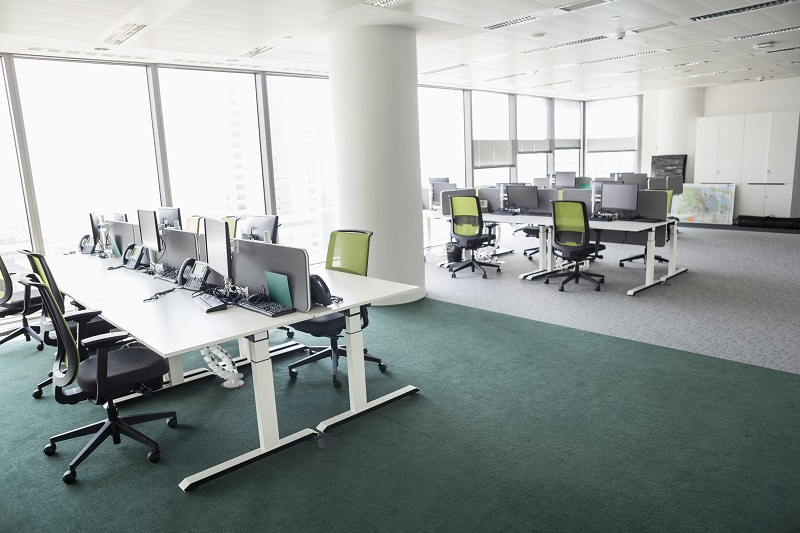The differences between coworking space and shared office space vary depending on the requirements and goals of the individuals and businesses using such spaces, and how the space can meet its members’ needs.
It’s important to analyze each coworking space and shared workspace on an individual basis. Each one will differ in terms of what it can offer you and your business.
Here are some of the key differences you are likely to encounter between these two office environments:
The target audience
Coworking spaces are usually geared toward freelancers, entrepreneurs and startup businesses. Shared work spaces tend to cater to more established businesses.
The location
Coworking spaces are not tied to a specific location and most are standalone buildings. Shared office spaces are usually housed in serviced business centers, which may offer other workspace solutions such as virtual or private offices.
The amenities
At a coworking space, you’ll find entry-level business amenities including free tea and coffee, a shared kitchen, WiFi connectivity, printers, and photocopiers. Some coworking spaces will also include access to meeting or conference rooms and a mail service, for an additional fee.
Shared offices provide a greater range of traditional office amenities to help their members with the day-to-day running of a company. For example, such spaces may offer full reception services, a kitchen, and a greater range of office equipment.
The community
Coworking spaces often focus on building a community for their members and, as a result, tend to offer a range of networking events. You’ll be surrounded by dozens of people and, consequently, meet a constant flow of new contacts.
In a shared office space, you’ll typically cohabit in a traditional office space of around 5 – 10 workers.
The layout
Many coworking spaces include breakout areas and open plan designs to encourage members to converse and collaborate. Some coworking spaces also include private offices and meeting rooms, which can be rented out by members. The range of office designs is usually more diverse across coworking spaces.
Shared office spaces offer a more traditional office design where a business can rent out a private room or suite for its employees. Companies tend to be more segregated from one another and the aesthetics of such spaces are usually more conventional, compared to a coworking space.
The lease
Coworking spaces tend to operate on a more flexible basis. Individuals and businesses can rent hot desks or dedicated desks on a daily basis, although most spaces offer members reduced rates if they sign up for a fixed term, which is usually three to six months.
Shared office spaces usually lease suites for a period of 12 months – but some do operate with more flexibility with minimum terms of one month.
The crossover
As flexible working increases in popularity, more coworking spaces and shared office spaces are opening their doors and the lines between these two office arrangements are blurring.
For example, many coworking spaces allow members to rent a private office space, and many shared office spaces are incorporating coworking areas to encourage greater collaboration between the businesses they house.
Large coworking operators are also experimenting with new coworking models. For example, WeWork now runs a Space-as-a-Service model where enterprise customers get a coworking area that is completely dedicated to one company. That area could be a private office, dedicated floor or an entire building.
Similar benefits
Both coworking and shared office spaces provide members with a workspace on a flexible basis and a range of other benefits. Both types of space are already furnished, provide a range of amenities and a more professional space than your home office.
Both spaces will also allow you to increase or decrease the number of desks you need as your business scales and provide a more cost effective solution compared to setting up a standalone office space.
Fundamental differences
A major differentiating factor between coworking and shared office spaces is the needs of your business and its growth stage.
Shared office spaces provide a quieter and more private environment. So, they lend themselves more naturally to businesses that want to knuckle down and focus on building their brand, products and services in the privacy of a dedicated office.
Coworking spaces tend to offer environments where newer companies and individuals can network, collaborate and begin to firm up their business plans. There’s an inherent lack of privacy in the majority of coworking spaces, but a stronger emphasis on community and brainstorming new business ideas.
But each coworking space and shared office space is different. It’s important to weigh up each space in terms of its approach and the benefits it brings your specific business.
Remember, both types of space provide flexibility to businesses. You’re not restricted by the long-term leases or mortgage terms of a traditional office space. Plus, many offer free trial periods so you may want to try-before-you-buy in order to properly evaluate whether a coworking space or a shared office space is right for you.










